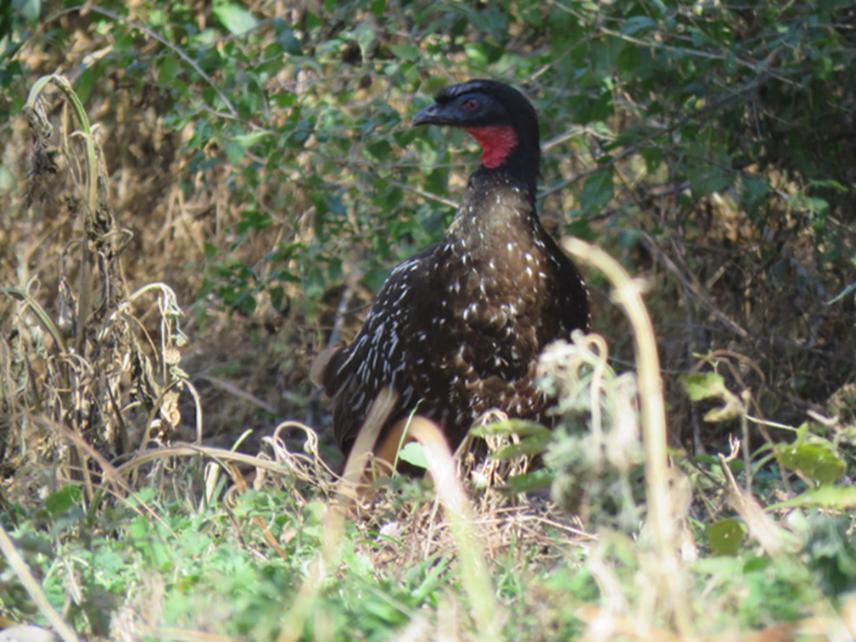Silvana Yanina Tejerina
Globally, cracids constitute one of the most threatened bird families due to habitat loss and hunting, representing a major source of protein for local communities. These species are seed dispersers and play a key role in the regeneration of tropical and subtropical forests. Also, cracids are a source of food for local people. The project objective is to determine, population abundance and distribution of the Red-faced Guan and Dusky-legged Guan in the Southern Yungas of Argentina, from this information we will determine their conservation status and develop a campaign of conservation education to enhance local people awareness.

Penelope obscura- Dusky-legged Guan.
This work will gather updated scientific information to estimate population abundance and range of the two species guans Penelope obscura and Penelope dabbenei. With this information we will be able to determine the conservation status of Penelope dabbenei and Penelope obscura for Southern Yungas of Argentina.
Conservation will be promoted by working with primary school students and the local community through lectures, providing information about species, the importance of keeping it under conservation and the value it possesses, providing posters with illustrative images of the species and conservation problems In the Southern Yungas.
We will set 20 linear transects of 1 km long separated by a distance of 500 meters in each site, in the different types of habitats found in the Southern Yungas (Forest Pedemonta and Montane Forest). Transects will be located on paths through the interior of forest, secondary roads, rivers and streams; will be walked in the morning (07:30-12:00 h) and in the afternoon (15:00-19:30 h). The species, number of individuals or groups seen or heard, the size of the group, time of sighting, habitat and the perpendicular distance between the observer and the observed species shall be recorded. A description of the type of environment where individuals are located (in which vegetation stratum, forest interior, path, forest edge, river edge, etc.) will be made. Sampling will take place during the wet season (November-March) and the dry season (May-October). Differences between habitats, strata occupied by birds and seasons, will be assessed using the Chi-square comparison test using the Yates Correction.
To determine population abundance or density, the Distance Sampling technique will be used using DISTANCE 7 program (Thomas et al., 2010). Remote sampling is a key method to produce estimates of abundance and density under difficult field conditions and consists of analyzing perpendicular distances and group size data to estimate density. This program assumes that all individuals at zero distance from the transect are detected and that it is not possible to visualize all individuals that are distanced from the transect. It will generate a database that has georeferenced points for both species of guans.